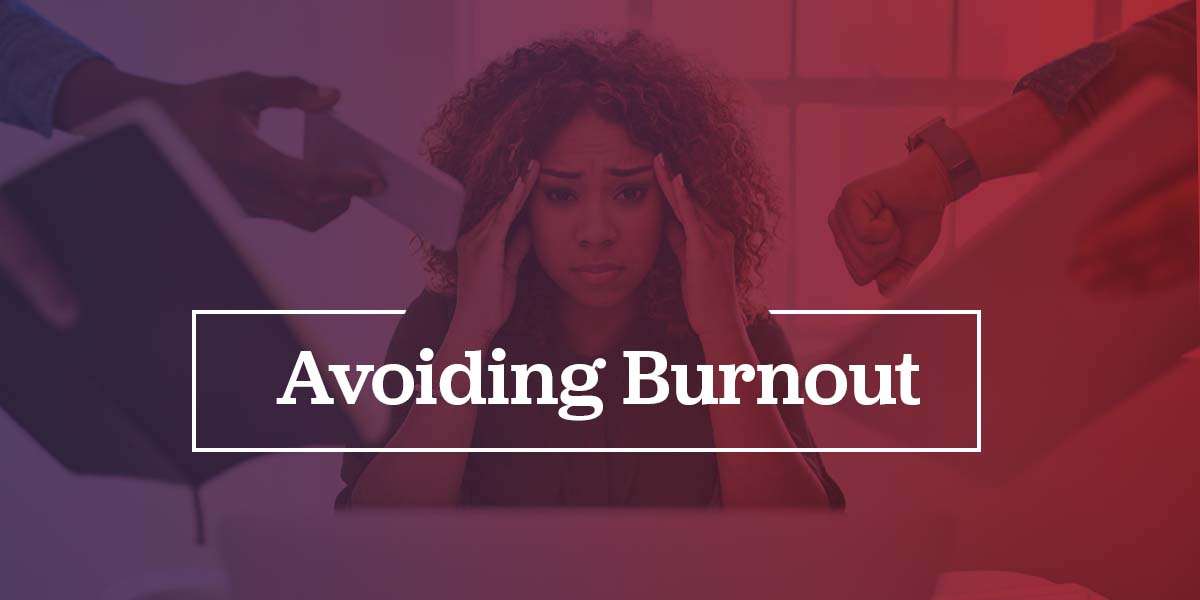
Burnout is real. It's common to experience stress and exhaustion once in a while. For me, feeling crispy at this time of year when we're still waiting for spring and the skies are gray is a thing.
According to Gallup, two-thirds of full-time workers experience burnout at some point. Here are some other statistics related to burnout in the workplace:
- Burnout costs an estimated annual $125-$190 billion in healthcare in the United States. (Harvard Business Review)
- Burnout is common in healthcare, social work, education, law enforcement, and customer service. (American Institute of Stress)
- Women report experiencing burnout more often than men. (Gallup)
- The World Health Organization (WHO) now recognizes burnout as an official medical diagnosis. It's defined as "a syndrome conceptualized as resulting from chronic workplace stress that has not been successfully managed."
- Long hours, excessive demands, and lack of control are significant risks for burnout. (Mayo Clinic)
- Burnout can lead to physical and mental health problems, including chronic fatigue, insomnia, depression, anxiety, and cardiovascular disease. (American Psychological Association)
- In a survey by Deloitte, 77% of respondents said that they had experienced burnout at their job.
Burnout can be even more prevalent at nonprofits because the work is often stressful. Nonprofit employees desire to make a difference, but this can lead to overcommitment.
At the last MN Council of Nonprofits annual conference, one of the keynote speakers got a round of applause when she talked about the issue of nonprofit employees making less money because they do meaningful work.
She said something like “Meaningful work doesn’t pay the bills."
According to Givebutter, a third of nonprofit workers are burnt out. Executive directors are hit the hardest; 60% of leaders report feeling “used up” at the end of a work day.
A survey by Nonprofit HR found that 85% of nonprofit employees experience some burnout, and 41% experience high levels of burnout. It also found that excessive workloads, little work-life balance and a lack of resources led to burnout.

What is Burnout?
Burnout is a state of physical, emotional, and mental exhaustion caused by prolonged stress in the workplace. It's characterized by cynicism, detachment, a sense of ineffectiveness and can lead to a loss of interest in work.
Burnout Factors
Low salaries, limited opportunities for advancement and lack of recognition contribute to burnout. The COVID-19 pandemic added new stressors, such as increased demand for services, financial uncertainty, and adapting to remote work.
Tips for Reducing Workplace Burnout
There are several strategies that organizations can use to combat workplace burnout:
Take breaks
It's essential to take regular breaks throughout the workday to recharge. Taking short breaks to stretch, walk or breathe can help reduce stress and improve focus.
Prioritize self-care
Taking care of one's physical and emotional health prevents burnout. This can include getting enough sleep, eating a healthy diet, exercising regularly, and practicing mindfulness.
Set boundaries
Set clear boundaries between work and personal life to avoid overworking and burnout. This can include setting work hours, not checking emails after hours, and taking time off.
Seek support
Seek support from colleagues, mentors, or mental health professionals when experiencing burnout. This will help you identify sources of stress and practice coping strategies.
Promote a positive work culture
Organizations have the ability to create a positive work culture and promote well-being. Offer flexible work arrangements, promote work-life balance, provide self-care resources, and recognize effort.
Address systemic issues
As an organization, address systemic issues that contribute to stress and burnout, such as excessive workloads, poor leadership or lack of resources. Fortunately, there are many resources for HR professionals dealing with workforce burnout.
Burnout Resources
- Society for Human Resource Management (SHRM): SHRM provides resources and training on employee well-being, including identifying and preventing workplace burnout.
- National Alliance on Mental Illness (NAMI): NAMI provides resources and support for individuals struggling with mental health concerns, including burnout.
- Employee Assistance Programs (EAPs): EAPs provide confidential counseling and support services for employees and their families, including resources for managing stress and preventing burnout.
- Centers for Disease Control and Prevention (CDC): The CDC provides resources and information on workplace health and well-being, including identifying and preventing workplace burnout.
- World Health Organization (WHO): The WHO provides resources and guidance on workplace mental health.
- Mental Health America (MHA): MHA provides resources and support for individuals struggling with mental health concerns, including burnout, and resources for employers and HR professionals.
- Nonprofit HR Solutions: Nonprofit HR provides resources and training on employee well-being in nonprofit organizations.
- Very Well Mind: This site offers mental health information when you need it most.
- American Psychological Association (APA): The APA provides resources and guidance on workplace mental health.
- Harvard Business Review: The Harvard Business Review provides articles and research on workplace well-being, including how to address burnout in the workplace.
We hope these resources make your day a little brighter and your work a little better. For more digital marketing, hosting, website design, or support services, contact us today!